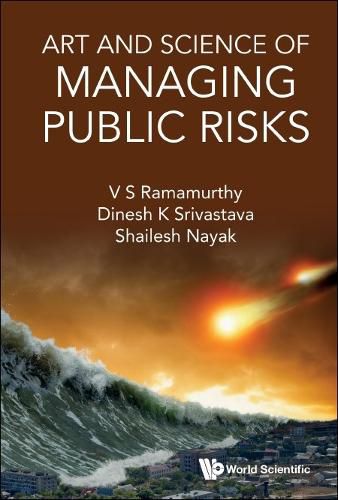Readings Newsletter
Become a Readings Member to make your shopping experience even easier.
Sign in or sign up for free!
You’re not far away from qualifying for FREE standard shipping within Australia
You’ve qualified for FREE standard shipping within Australia
The cart is loading…






This title is printed to order. This book may have been self-published. If so, we cannot guarantee the quality of the content. In the main most books will have gone through the editing process however some may not. We therefore suggest that you be aware of this before ordering this book. If in doubt check either the author or publisher’s details as we are unable to accept any returns unless they are faulty. Please contact us if you have any questions.
The COVID-19 and the onslaught of Climate Change have exposed the fragility of our lives and ecosystem. Natural disasters like asteroid impact, earthquakes, tsunamis, volcanic eruptions, floods, cyclones, etc., and pandemics like plagues, smallpox, cholera, tuberculosis, malaria, etc., have been man’s nemesis from the beginning of time. This list of public risks has now expanded to include pollutions, industrial disasters, and very many new, confusing and emerging technologies.How have governments handled these public risks? How have they convinced people to take precautions under such emergencies? What measures does one take for managing them, and for the rescue, relief, and rehabilitation of the masses? And most importantly, how does one prepare the masses to face the risks without panicking? It is argued that sermons, dictates, and discourses may not work in democratic societies. Rather, one needs a new breed of risk communicators who can enter into a dialogue with the people to prepare them for these challenges and to welcome truly beneficial new technologies.The book takes a panoramic view of the issue of risks and illustrates the challenges and opportunities of the Art and Science of Managing Public Risks. It celebrates the indomitable spirit of man, who has leveraged science to predict - where possible, and provide solutions for managing these risks.
$9.00 standard shipping within Australia
FREE standard shipping within Australia for orders over $100.00
Express & International shipping calculated at checkout
This title is printed to order. This book may have been self-published. If so, we cannot guarantee the quality of the content. In the main most books will have gone through the editing process however some may not. We therefore suggest that you be aware of this before ordering this book. If in doubt check either the author or publisher’s details as we are unable to accept any returns unless they are faulty. Please contact us if you have any questions.
The COVID-19 and the onslaught of Climate Change have exposed the fragility of our lives and ecosystem. Natural disasters like asteroid impact, earthquakes, tsunamis, volcanic eruptions, floods, cyclones, etc., and pandemics like plagues, smallpox, cholera, tuberculosis, malaria, etc., have been man’s nemesis from the beginning of time. This list of public risks has now expanded to include pollutions, industrial disasters, and very many new, confusing and emerging technologies.How have governments handled these public risks? How have they convinced people to take precautions under such emergencies? What measures does one take for managing them, and for the rescue, relief, and rehabilitation of the masses? And most importantly, how does one prepare the masses to face the risks without panicking? It is argued that sermons, dictates, and discourses may not work in democratic societies. Rather, one needs a new breed of risk communicators who can enter into a dialogue with the people to prepare them for these challenges and to welcome truly beneficial new technologies.The book takes a panoramic view of the issue of risks and illustrates the challenges and opportunities of the Art and Science of Managing Public Risks. It celebrates the indomitable spirit of man, who has leveraged science to predict - where possible, and provide solutions for managing these risks.